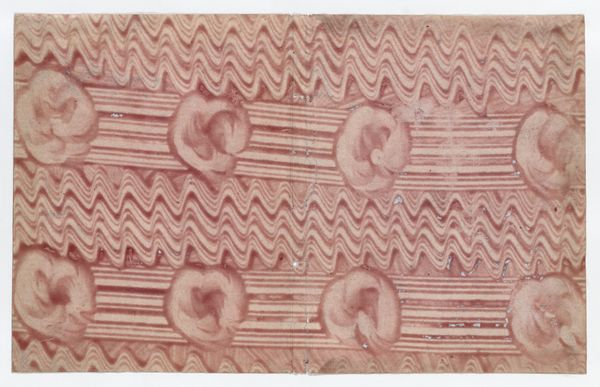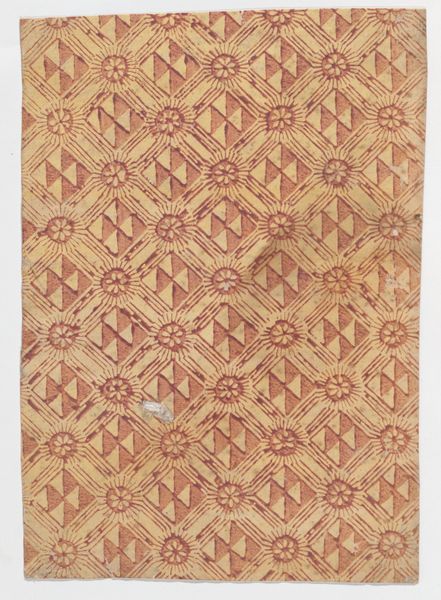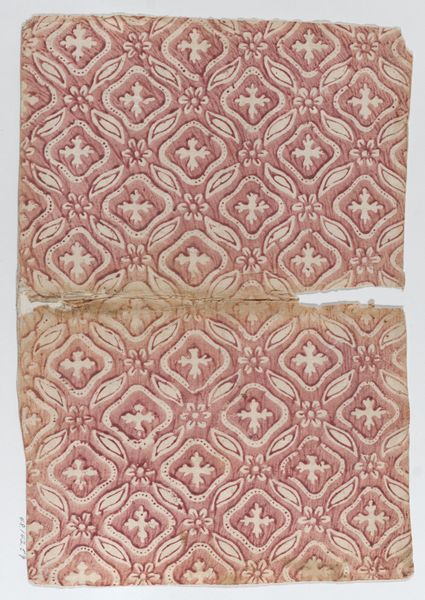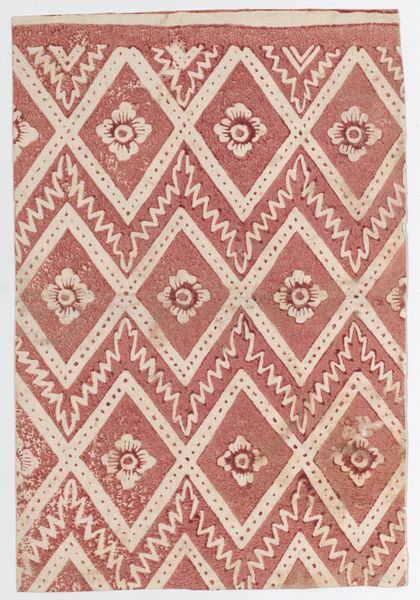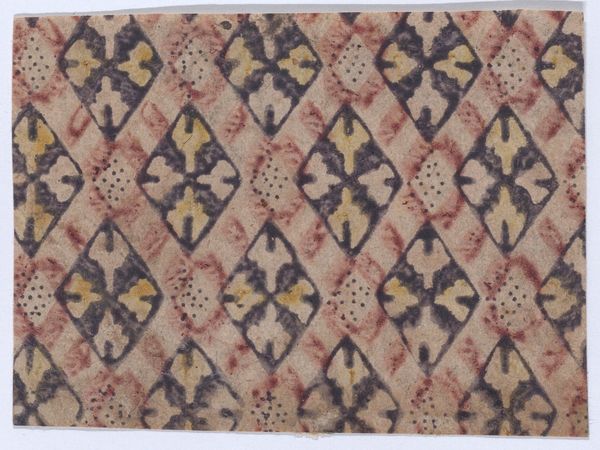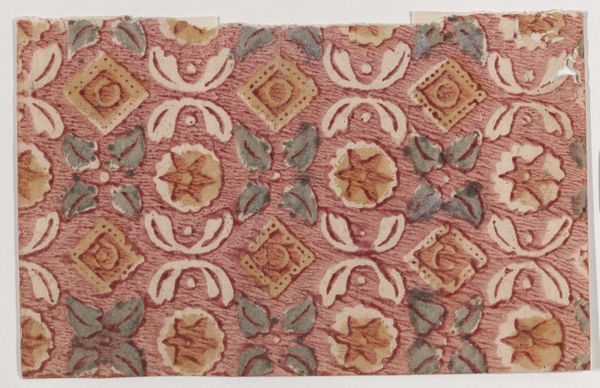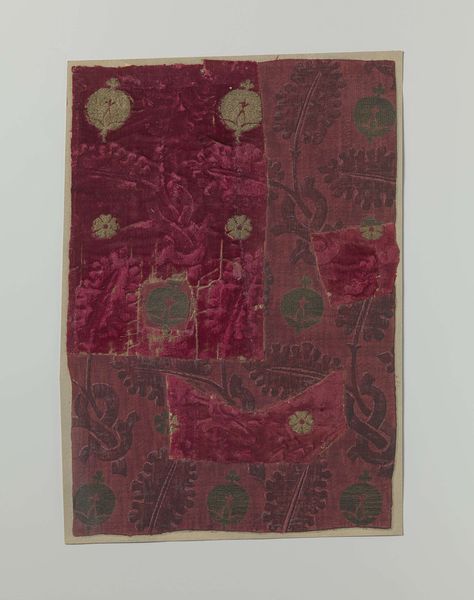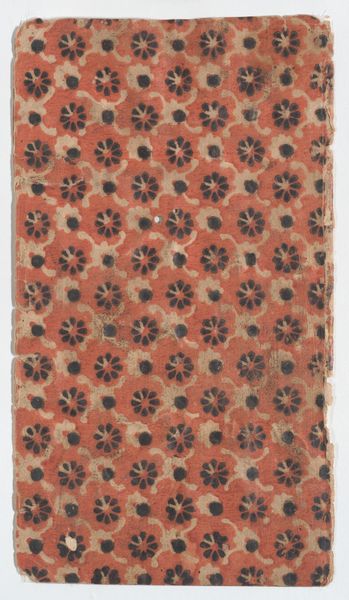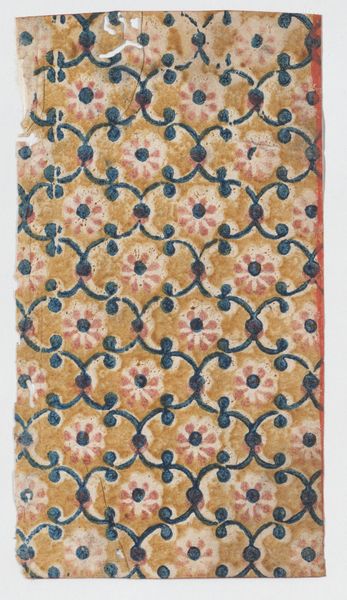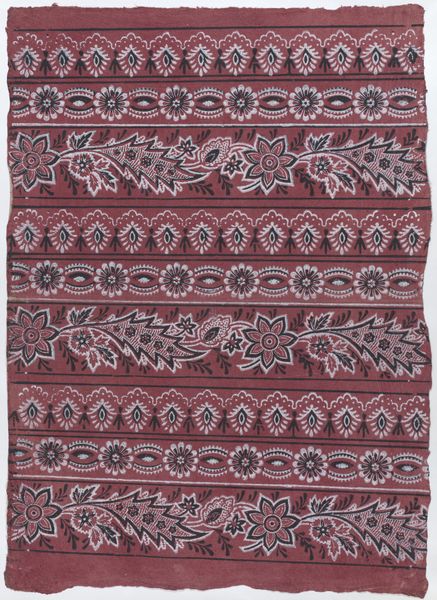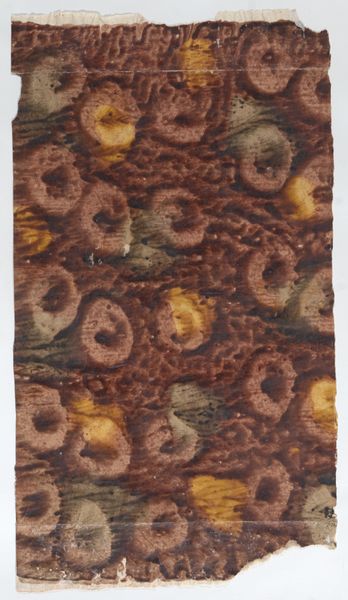
Book cover with overall red curved line pattern 1800 - 1900
0:00
0:00
drawing, print
#
drawing
# print
#
textured
#
geometric
#
line
Dimensions: Sheet: 8 7/16 × 16 1/2 in. (21.5 × 41.9 cm)
Copyright: Public Domain
Editor: So, this intriguing piece is called "Book cover with overall red curved line pattern." It's an anonymous work from somewhere between 1800 and 1900, housed here at the Met. It appears to be a drawing, possibly also a print. There’s something hypnotic about the repetition, but also… a little chaotic. What stands out to you? Curator: The historical context is key here. Bookbinding, particularly the design of covers, became increasingly democratized during the 19th century with advances in printing and industrial production. The materials and patterns used could reflect socio-economic status. Knowing that this is a cover fragment, how do you think its design plays into its function of protection and promotion of the written content within? Editor: That's a good point! The intense pattern is certainly eye-catching – like it is meant to grab your attention from a bookstore shelf. I wonder if the repeating pattern had more than just an aesthetic function. Maybe a more subliminal meaning? Curator: Exactly! Consider the visual vocabulary of the time. Geometric patterns like these were often incorporated into textiles and other decorative arts, signifying prosperity and good taste, even some concepts related to spiritualism that developed during the late 19th Century. However, given its location on a book cover, do you see any signs that the cover or images could relate to its content? How accessible would that type of design have been to an ordinary person in, say, the 1850s? Editor: Well, given the repetitive nature, perhaps mass production was already a factor. Yet the distressed condition makes it appear fragile and unique. So, in general it reflects some democratization of design, with certain aspirations in terms of social identity and status connected to spiritual ideas of the time. It's definitely given me something to think about. Thanks! Curator: Indeed! It is amazing how even a small fragment like this can open up larger questions about the culture that produced it and used it. Thank you.
Comments
No comments
Be the first to comment and join the conversation on the ultimate creative platform.
